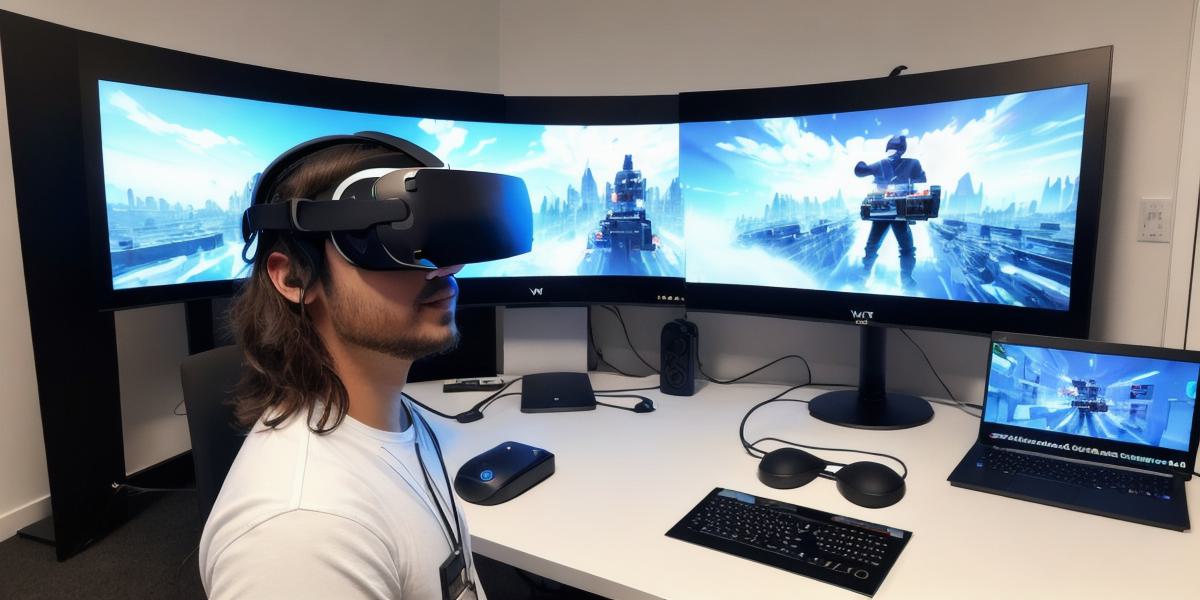Introduction:
Virtual reality (VR) technology has been around for decades, but only in recent years have we seen a surge in its popularity and adoption. With the advent of more powerful hardware and software, VR experiences have become more immersive, realistic, and engaging than ever before. In this article, we will explore how VR experiences work and what goes into creating them.
Heading 1: What is Virtual Reality?
Virtual reality is a technology that allows users to experience a simulated environment in a headset or other wearable device. The idea is to create an environment that feels as close to reality as possible, with the user fully immersed in the experience. VR technology uses sensors and cameras to track movement and adjust the environment accordingly, creating a seamless experience for the user.
Heading 2: How do VR Experiences Work?
Creating a VR experience involves several different components that work together to create an immersive and engaging experience. These include:
- Hardware: The hardware required for a VR experience includes a headset, sensors, and cameras. The headset is worn by the user and tracks their movement, while the sensors and cameras help adjust the environment in real-time.
- Software: The software is responsible for creating the virtual environment that the user experiences. This includes everything from the graphics to the sound effects and interactions with objects within the environment.
- Content creation: Creating content for a VR experience requires specialized skills and knowledge. This includes not only programming and design, but also understanding how users interact with the environment and how to create an engaging and immersive experience.
Heading 3: Case Studies and Personal Experiences
One of the best ways to understand how VR experiences work is to look at real-world examples. Here are a few case studies and personal experiences that illustrate how VR technology can be used in a variety of industries:
- Gaming: VR gaming has been one of the most popular uses for this technology. Games like Beat Saber, Half-Life: Alyx, and Star Wars: Squadrons have all been critically acclaimed for their immersive and engaging experiences.
- Training and simulation: VR technology can be used to train professionals in a variety of fields, from medicine to aviation to military. For example, surgeons can use VR simulations to practice complex procedures, while pilots can use VR simulators to practice flying in a safe and controlled environment.
- Tourism: VR technology has also been used to create virtual tours of popular tourist destinations. These experiences allow users to explore these locations from the comfort of their own homes, without having to physically travel.
Heading 4: Research and Experiments
There have been numerous studies and experiments conducted on how VR technology affects the brain and how it can be used to treat a variety of conditions. Here are a few examples:
- Motion sickness: Some studies have shown that prolonged exposure to VR experiences can cause motion sickness, while others have found that this is largely dependent on the individual’s susceptibility to motion sickness.
- Therapy: VR technology has been used in therapy to treat a variety of conditions, including anxiety, depression, and PTSD. These experiences allow users to confront their fears and triggers in a controlled environment, leading to improved mental health outcomes.
Summary:
Virtual reality technology is rapidly evolving, and we are likely to see even more exciting developments in the coming years. For developers looking to create VR experiences, it’s important to stay up-to-date on the latest hardware and software, as well as best practices for creating engaging and immersive content. By doing so, you can help shape the future of this exciting technology.
FAQs:
- What is the difference between VR and AR?
VR is a fully immersive experience that creates a simulated environment for the user to explore, while AR overlays virtual objects onto the real world. - How do I create a VR experience?
Creating a VR experience requires specialized skills and knowledge in programming, design, and content creation. There are also many resources available online for developers looking to get started. - Can VR experiences be used for education or training purposes?
Yes, VR technology can be used to create simulations that allow users to learn and practice new skills in a safe and controlled environment. - What are some potential drawbacks of using VR technology?
While VR technology has many benefits, it can also cause motion sickness in some individuals, and it may not be suitable for everyone. It’s important to consider these factors when deciding whether to use VR in a particular context.
